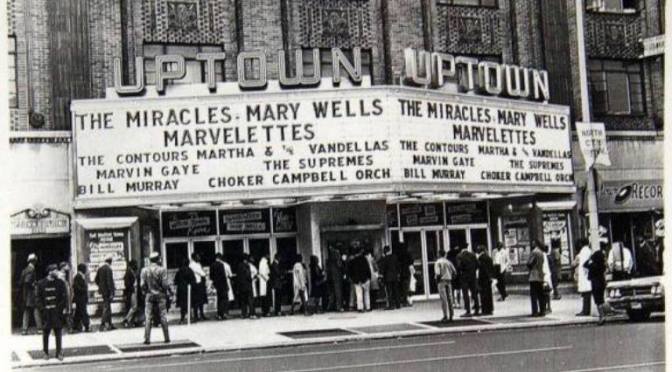Blue Moon Rock Evolution - 1962
The dominant news story of 1962 was the Cuban Missile Crisis. Earlier in the year, John F. Kennedy had announced an embargo on trade between the US and Cuba, but in October, an American U-2 spy plane photographed Soviet nuclear missile sites being built in Cuba, leading to one of the defining moments of the Cold War.
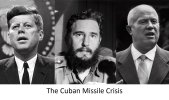
If music fans were looking for something to take their mind off the clock ticking towards midnight, then the debut releases of three significant artists would come as a welcome relief.
1962 was the year of heroes in all shapes and sizes.
The Beatles
The Beatles auditioned for Decca Records on new Years Day in 1962. Decca's Dick Rowe told fellow A&R rep, Mike Smith, that he'd have to decide between The Beatles and Brian Poole and the Tremeloes, who'd auditioned earlier in the day. With the latter being a "local group", The Beatles were rejected, with Rowe delivering the infamous quote, "Guitar groups are on the way out, Mr. Epstein."
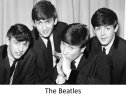
Three months later, they were signed to EMI's Parlophone label by George Martin, with the first session at what would later be known as Abbey Road Studios on 6 June 1962. After replacing drummer Pete Best with Ringo Starr, a recording session on 4th September yielded a recording of "Love Me Do" but a dissatisfied Martin hired drummer Andy White for the band's third session a week later.
Martin initially selected the Starr version of "Love Me Do" for the band's first single, though subsequent re-pressings featured the White version, with Starr on tambourine.
Released in early October 1962, "Love Me Do" peaked at number seventeen on the Record Retailer chart.
Whilst Dick Rowe later became known as "the man who turned down The Beatles", he did sign The Rolling Stones on the recommendation of George Harrison.
Bob Dylan
Bob Dylan's eponymous debut album was released on 19th March 1962. It comprises 13 tracks, only two of which were Dylan originals.
One of them, "Talkin' New York", includes the following lyrics:-
Well, I got a harmonica job, begun to play
Blowing my lungs out for a dollar a day
I blowed inside out and upside down
The man there said he loved my sound
These words neatly summarise how Dylan got his recording contract with Columbia.
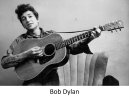
Having dropped out of college, Dylan travelled to New York City in January 1961 to perform and visit his musical idol Woody Guthrie at Greystone Park Psychiatric Hospital. The young singer would buy Guthrie cigarettes to smoke in hospital and sing Tom Joad to its author during long afternoons by his deathbed.
Dylan played a show at Gerdes Folk City in New York's Greenwich Village for which music critic Robert Shelton wrote a positive review in The New York Times.
The same month, Dylan met producer John Hammond at a rehearsal session for Carolyn Hester on September 14, 1961. Hester, who had been signed by Hammond the year before, invited Dylan to the session as a harmonica player. Hammond later told Shelton that he decided to sign Dylan "on the spot" and invited him to the Columbia offices for a more formal audition recording. There, Hammond presented him with Columbia's standard five-year contract for previously unrecorded artists, and Dylan signed immediately.
With studio time scheduled for late November, Dylan used the intervening period to search for new material even though he was already familiar with many songs. According to Dylan's friend Carla Rotolo (sister of his girlfriend Suze Rotolo), "He spent most of his time listening to my records, days and nights. He studied the Folkways Anthology of American Folk Music", and the singing of folk singers such as Ewan MacColl. Funny to think that the greatest folk singer in the second half of 20th Century was inspired by a lad from Salford. Dylan himself recalls reading books he found on other people's shelves during the time he made the album: Shelley, Poe, Faulkner, Gogol, and The White Goddess by Robert Graves.
The album was ultimately recorded in three short afternoon sessions between November 20th to 22nd at Columbia's 7th Avenue studio. Hammond later said that "It occurred to me at the time that I'd never worked with anyone so undisciplined before," in reference to Dylan popping every ‘p’, hissing every ‘s’ and constantly wandering off the mic. "His guitar playing, let us say charitably, was rudimentary, and his harmonica was barely passable, but he had a good sound and a point of view and an idea," Hammond recalled, adding that "He was very disenchanted with the social system. I encouraged him to put all his hostility on tape, because I figured this was the way, really, to get to the true Bob Dylan."
Whilst the album was made at low cost, it only sold 5,000 copies in its first year, just breaking even.
The other original on the album is "Song To Woody", in tribute to his hero. The tune uses the melody from Guthrie's song "1913 Massacre", and the line "that come with the dust and are gone with the wind" paraphrases the line "we come with the dust and we go with the wind" in Guthrie's "Pastures of Plenty", a song about people displaced by the dust storms and drought which swept Oklahoma, Texas and other states in the 1930s during The Great Depression.
The Beach Boys

The Beach Boys - brothers Brian, Dennis and Carl Wilson, plus their cousin Mike Love and friends David Marks and Al Jardine - released their first album,
Surfin' Safari, in October 1962.
Whilst Mike sang both the lead tenor and deep bass parts in the band's complex vocal arrangements, it was Brian who arranged their vocals and was considered the genius behind the band. Inspired by George Gershwin's music, specifically "Rhapsody in Blue", and the vocals of the Kingston Trio (who The Beach Boys took their trademark striped shirts and white pants from), Brian Wilson created what was probably the first significant rock band of the 1960s - certainly in terms of album releases.
One of the aspects that makes this album so significant is that, unlike other contemporary rock albums, three-quarters of the songs were originals, written by Brian Wilson and Mike Love along with friend Gary Usher, a musician, songwriter, and record producer who worked with various Californian acts. Another significant aspect was, of course, those harmony vocal arrangements and the incredible vocal range used in their songs.
Booker T & The MGs
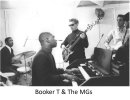
Booker T. Jones was still in high school when he got his first professional gig, playing baritone sax on the "Cause I Love You" session for Rufus and Carla Thomas. This was the first hit single for Satellite Records, which as we read in Threespires’ 1961 write-up, had changed its name to Stax based on the names of founders, siblings Jim
Stewart and Estelle
Axton. After that initial session, Jones convinced the owners that they should keep him on by demonstrating his piano and organ prowess.
As a way of financing Stax in the early days, Estelle Axton opened a record shop, and when it became a popular hangout with the local teenagers, it provided Axton with a way of understanding what sounds appealed to the younger generation. In addition to being part of the Mar-keys, who appeared on our 1961 list, 20-year-old Steve Cropper worked behind the counter and this was how he met Booker T.Jones. When Jones found out Cropper played guitar, they teamed up with two older musicians for a 1962 recording session at the studios and when the singer failed to turn up, the four musicians started jamming in the studio. Jones laid down an organ groove and the others jammed around it, the whole thing being recorded by Stax president and producer Jim Stewart, who was behind the recording console at the time.
The song they'd come up with was "Behave Yourself" and Stewart told the musicians that he'd put it out as a single. They needed a B-side, which is where "Green Onions" came in, a piece built around Jones' Hammond organ riff. The instrumental was put out under the name Booker T & The MGs, and it was a huge hit, reaching number 3 on the Billboard chart.
That's the story of how Booker T. Jones, along with his band, the MGs, became the architect of the Stax Records sound, becoming one of the most influential soul musicians of all time, given the list of iconic soul records he'd play on throughout the 1960s.
Music Round-Up
Whilst they wouldn’t make their recording bow until the following year, The Rolling Stones made their live debut in 1962 at London's Marquee Club, opening for Long John Baldry.
Other notable music releases this year included "Return to Sender" by Elvis Presley, "It Might as Well Rain Until September" by Carole King, "Sherry" by The Four Seasons, “The End of the World” by Skeeter Davis and, continuing mrbelfry’s theme of novelty records, Bernard Cribbins with "Right Said Fred".
"I Left My Heart in San Francisco" was originally written for singer Claramae Turner, who often used it as an encore but never got around to recording it. Therefore, it was Tony Bennett who first recorded the song in 1962, making it world famous.
"The Young Ones" by Cliff Richard & The Shadows, is the title song to the 1961 film
The Young Ones and its soundtrack album. With advance orders of over 500,000, it was released in January 1962 and went straight to No. 1, but this was dwarfed by Frank Ifield’s cover of “I Remember You”, which sold over one million!
Outside of Music
There were heroes outside of the music world too. John Glenn became the first American to orbit the earth as part of Project Mercury, and later that year, President John F. Kennedy, made his "We choose to go to the Moon" speech at Rice University, reaffirming that the U.S. will put a man on the Moon by the end of the decade. 1962 was also the year that the Telstar satellite relayed the first live trans-Atlantic television signal.
Andy Warhol premiered his Campbell's Soup Cans exhibit in Los Angeles and two classic Marvel Comic superheroes made their debuts. The Hulk, created by Stan Lee and Jack Kirkby, first appeared in the debut issue of
The Incredible Hulk in May 1962. Whilst
The Amazing Spider-Man comic book series didn't start until 1963, the Spider-Man character created by Stan Lee and Steve Ditko, made his first appearance in issue #15 of Marvel's
Amazing Fantasy on August 1st.
Actress Marilyn Monroe was found dead aged 36 from an overdose of sleeping pills and chloral hydrate at her home in Los Angeles; it is officially ruled a "probable suicide" but the exact cause has been disputed.
Anti-apartheid activist Nelson Mandela was arrested by the South African government and charged with incitement to rebellion. On November 7, he was sentenced to imprisonment.
In December, David Lean's epic film
Lawrence of Arabia, featuring Peter O'Toole, Omar Sharif, Alec Guinness, Jack Hawkins and Anthony Quinn, premiered in London; six days later, it opened in the U.S.
And returning to the Cold War theme, Captured American spy pilot Francis Gary Powers was exchanged for captured Soviet spy Rudolf Abel, in Berlin.
One More Hero
The Cuban Missile Crisis ended on 28th October when Nikita Khrushchev announced that he had ordered the removal of Soviet missile bases in Cuba. In a secret deal between Kennedy and Khrushchev, Kennedy agreed to the withdrawal of U.S. missiles from Turkey. The fact that this deal was not made public made it look as though the Soviets had backed down.
Time for one more hero: The day before this climbdown, Vasily Arkhipov, executive officer of Soviet submarine B-59, refused to launch nuclear torpedoes against the U.S. Navy. This event is widely regarded as crucial in averting a worldwide nuclear war.

 Three months later, they were signed to EMI's Parlophone label by George Martin, with the first session at what would later be known as Abbey Road Studios on 6 June 1962. After replacing drummer Pete Best with Ringo Starr, a recording session on 4th September yielded a recording of "Love Me Do" but a dissatisfied Martin hired drummer Andy White for the band's third session a week later.
Three months later, they were signed to EMI's Parlophone label by George Martin, with the first session at what would later be known as Abbey Road Studios on 6 June 1962. After replacing drummer Pete Best with Ringo Starr, a recording session on 4th September yielded a recording of "Love Me Do" but a dissatisfied Martin hired drummer Andy White for the band's third session a week later. Having dropped out of college, Dylan travelled to New York City in January 1961 to perform and visit his musical idol Woody Guthrie at Greystone Park Psychiatric Hospital. The young singer would buy Guthrie cigarettes to smoke in hospital and sing Tom Joad to its author during long afternoons by his deathbed.
Having dropped out of college, Dylan travelled to New York City in January 1961 to perform and visit his musical idol Woody Guthrie at Greystone Park Psychiatric Hospital. The young singer would buy Guthrie cigarettes to smoke in hospital and sing Tom Joad to its author during long afternoons by his deathbed.

